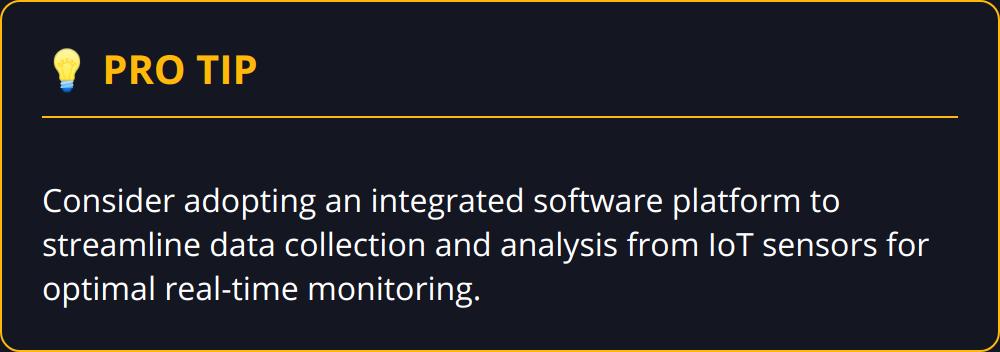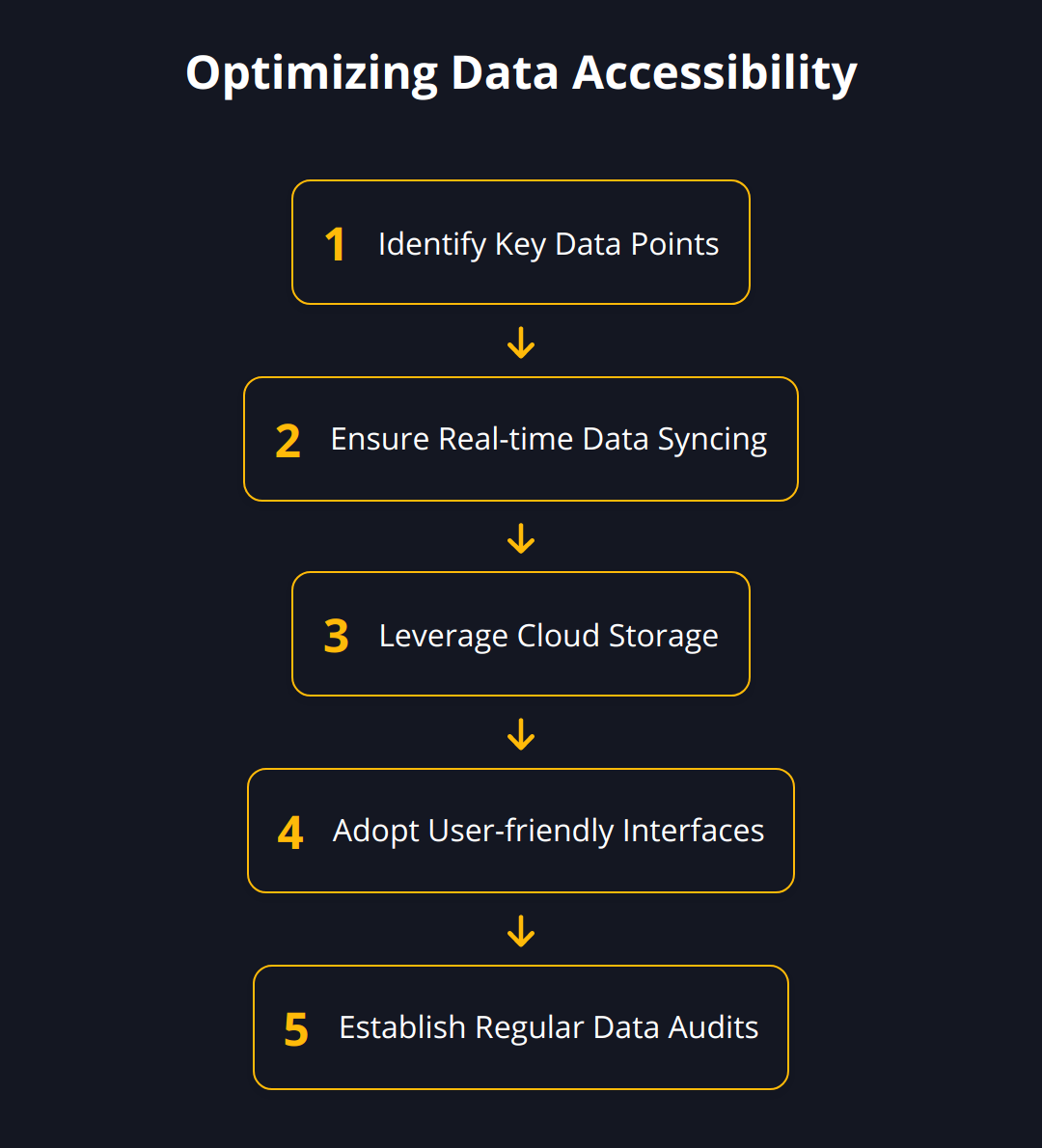Smart factories are embracing the digital twin technology, revolutionizing how we approach manufacturing processes. We at Newroom Connect recognize that efficiently integrating digital twins can significantly enhance operational productivity and agility. However, embarking on this journey can be complex, with various challenges that need to be navigated skillfully.
In this blog post, we offer professional advice on adopting digital twin technology in smart manufacturing setups, tackle common hurdles, and explore future trends that can further streamline and optimize the industry.
Smart Factory Digital Twin Integration
Introducing digital twins into smart manufacturing is not just about adopting new technology; it’s about transforming operational models to achieve unprecedented levels of efficiency. For manufacturers seeking to navigate this terrain, here are action-oriented insights to guide the integration process.
Targeted Objectives Drive Success
Begin by setting clear, measurable goals. Whether it’s reducing machine downtime, optimizing production workflows, or boosting product quality, having a specific target focuses efforts and resources. In the case of a manufacturer aiming to cut machine downtime, a digital twin could be employed to simulate scenarios and predict failures before they happen. As reported by Deloitte, digital twins used in predictive maintenance can reduce downtime by up to 20%.

Flexible Technology is Fundamental
Next, select technology solutions that can grow and adapt with your business. The manufacturing landscape is dynamic, and digital twin technology must be able to scale and evolve. Flexible platforms enable you to integrate additional machinery and processes over time without overhauling entire systems. The composable nature of digital twins aligns with current market trends, where modular elements can be added or reconfigured as necessary, much like using building blocks in construction.

Real-time Data is the Lifeblood of Digital Twins
Lastly, real-time data and analytics should be the cornerstone of any digital twin initiative. Accurate, up-to-the-minute data feeds are vital for the digital twin to be a reliable mirror of the physical world. Real-time analytics empower operators to make informed, proactive decisions. According to a study by LNS Research, 34% of factories keen on digital transformation prioritize real-time data analytics for achieving operational excellence.
Here are brief, actionable steps to get started:
-
Define the desired outcome of your digital twin strategy.
-
Evaluate and invest in scalable digital twin platforms that are known for their agility.
-
Ensure your technology stack includes robust real-time data capture and analysis capabilities.
By following these strategies, manufacturers can effectively tap into the benefits offered by digital twins, turning the promise of smart manufacturing into a competitive advantage. As the technology evolves, expect to see even more sophisticated application of data, AI, and machine learning to fuel innovation. For a deeper understanding of digital twin potentials, consider exploring our insights on digital twin innovation.
In the next chapter, we will examine how to measure the impact of digital twins on smart factory performance, ensuring that manufacturers can track and quantify the benefits.
Boosting Factory Performance
Transforming your smart factory with digital twin technology requires a tactical approach that hinges on real-time insights and foresight into potential issues. By concentrating on data-driven strategies, manufacturers can supercharge efficiency and future-proof their operations.

Implement Dynamic Real-Time Monitoring
The ability to monitor equipment and processes in real time offers an unparalleled window into the functioning of a smart factory. Real-time monitoring allows quick detection and resolution of problems, potentially saving vast amounts of time and resources. An eloquent example of this is Siemens’ use of digital twins to visualize and analyze their plant data, which resulted in a significant improvement in process efficiency.
One pro tip is to integrate IoT sensors extensively throughout your facility. These should feed into your digital twin allowing for a dynamic and accurate representation of your factory. Data from these sensors can pinpoint bottlenecks in production lines or highlight inefficiencies in energy consumption.

Adopt Predictive Maintenance Strategies
Predictive maintenance is the stronghold of an optimized manufacturing process. Leveraging the predictive capabilities of digital twins can reduce downtime by forecasting when and where a machine is likely to fail. For example, General Electric reported a 20-25% reduction in maintenance costs and a 10-20% decrease in operational downtime by utilizing predictive maintenance informed by digital twins.
To start, conduct an analysis to identify the most critical machines that if failed, would cause the biggest disruption. Use digital twins to run simulations and identify patterns that precede a failure. This proactive approach allows for maintenance to be scheduled during off-peak hours, maintaining productivity and extending the lifespan of machinery.
Enhance Quality Control Measures
In manufacturing, the highest standard of quality control is indispensable. Digital twins can refine quality control by offering real-time tracking and analysis capabilities. BMW, for example, leveraged digital twins to simulate assembly processes, catching potential quality issues before they could occur on the shop floor.
Equipping your digital twin with detailed specifications and tolerance levels for each product can help operatives detect any deviations from the standard immediately. Moreover, digital twins can be linked to client requirements so any change in demand can be addressed without compromising quality.
Here’s a glance at focused strategies for tuning your digital twin:
-
Install IoT sensors to collect comprehensive data for real-time insights.
-
Identify critical assets and create predictive models to guide maintenance schedules.
-
Integrate high-quality control measures directly into your digital twin’s functionalities.
Smart factory leaders must boldly adopt these methods to safeguard their production efficiency and quality standards. For insights on leveraging the latest AI advancements in your digital twin, examining our take on digital twin and AI can be instructive. As we progress, let’s examine how to measure and document the impact of these strategies on overall smart factory performance.
Streamlining Data Integration
The leap into digital twin adoption in smart factories can sometimes feel like navigating an intricate maze. Critical challenges in data integration and management often stand out, hindering the seamless operation of digital twins. To conquer these challenges, manufacturers must establish robust best practices for managing the wealth of data required for an effective digital twin.
Consolidate Data Sources
Unified data architecture is vital. Manufacturers must consolidate disparate data sources, enabling a comprehensive data flow into the digital twin. A single source of truth ensures that every piece of information reflects the actual conditions on the factory floor. Reports indicate that companies that successfully integrate their data reduce operational costs by as much as 30%.
Employ Advanced Analytics
With the right analytics, raw data turns into actionable insights. Utilizing advanced analytics, factories can interpret complex datasets, boosting the digital twin’s predictive and decision-making prowess. A Bain & Company study finds that leaders in data-driven decision-making are five times more likely to make faster decisions than their competitors.

Optimize Data Accessibility
Ease of data access directly influences operational responsiveness. It’s essential that data is not only available but also easily interpretable by different stakeholders. Cloud-based solutions are increasingly popular, offering secure, remote access to digital twin data.
Strategies to Forge Interdepartmental Synergy
In the age of digital twins, solitary departmental efforts are a thing of the past. Today’s smart manufacturing demands a tight-knit collaboration across all departments.
Foster a Collaborative Culture
Building a collaborative culture starts from the top. Leadership must encourage open communication and shared responsibility for the digital twin’s success. Shared interfaces where different departments can visualize impacts of their actions on others boost cross-functional understanding.
Institute Cross-departmental Training
Knowledge sharing through cross-departmental training sessions is indispensable. Familiarizing all departments with the capabilities and benefits of the digital twin demystifies the technology and cultivates collective ownership.
Integrate Collaboration Tools
Technology that promotes teamwork is central to this effort. Incorporating collaboration tools into the digital twin’s ecosystem makes it easier for various departments to contribute to and extract value.
Handling Security with Proactive Measures
Security is a major concern with any technology adoption, and digital twins are no exception.
Implement Robust Cybersecurity Measures
Protect your digital assets with layers of cybersecurity. Antivirus software and firewalls are just the start; consider advanced threat detection systems and regular security audits to defend against the ever-evolving cyber-threat landscape.
Employ Data Encryption
Every piece of data transmitted to and from your digital twin should be encrypted. This ensures that, even in a breach scenario, the information remains unintelligible to unauthorized individuals.
Regular Security Training
Your employees are your first line of defense. Provide ongoing security training to ensure staff can recognize potential threats and know how to respond.
By embedding these strategies into your digital twin roadmap, the technology becomes not just an add-on but a fully ingrained part of your smart factory ecosystem. With precise data integration, a collaborative multidisciplinary approach, and a strong security posture, adopting digital twins becomes less of a challenge and more of an opportunity to redefine manufacturing success. Moving forward, we will delve into how to continuously optimize your digital twin integration for lasting benefits.
Quick actionable insights:
-
Streamline data architecture to reduce costs and increase data reliability.
-
Implement advanced analytics to transform data into fast, actionable insights.
-
Use cloud solutions for data accessibility to enhance responsiveness.
-
Create shared interfaces for improved interdepartmental collaboration.
-
Introduce collaboration tools within the digital twin ecosystem.
-
Regularly update cybersecurity measures and train employees to maintain a secure digital twin environment.
How Will Digital Twins Advance?
The future of digital twins in smart factories is shaping up to be a dynamic evolution characterized by significant advancements in technology and strategy. Factory leaders need to be prepared for the changes that lie ahead and ready to adopt new techniques that will give them a competitive edge in manufacturing. Here are the trends and developments expected to shape the next wave of digital twin technology integration.
Composable Digital Twins Take Center Stage
As manufacturers seek to stay ahead of the curve in an ever-evolving industry, the need for agility and flexibility becomes evident. Composable digital twins are the answer to this need. By allowing the decoupling of different elements, they can be reassembled or scaled according to specific use cases. This modularity promotes a plug-and-play approach where adjustments can be made quickly without disrupting existing operations. As a result, companies can remain nimble and responsive to new technologies and market demands.
AI and ML: Driving Intelligent Decision-Making
The integration of Artificial Intelligence (AI) and Machine Learning (ML) within digital twins is set to redefine what these technologies can achieve. With AI, digital twins will no longer just reflect the current state; they will predict the future. Through ML algorithms that continually learn and improve, the predictive accuracy of digital twins will soar, leading to unparalleled decision-making support. The ability to anticipate equipment failures or process inefficiencies before they occur means smarter resource allocation and proactive management of potential risks.
Concentration on Security and Portfolio Management
As the sophistication of digital twins grows, so does the complexity of managing them. Emphasizing security and portfolio management will be critical. Advanced security protocols will be paramount to protect the sensitive processes and data within digital twins from cyber threats. Additionally, proper portfolio management will ensure an organized approach to maintaining and updating digital twins, keeping them in line with strategic goals.
Manufacturers should consider the following actionables to stay ahead:
-
Embrace the flexibility of composable digital twins to adapt quickly to changes
-
Invest in AI and ML technologies to enhance the predictive power of your digital twins
-
Stay vigilant about cybersecurity threats and make security a top priority
-
Develop a clear portfolio management strategy for your digital twin initiatives
By leveraging these forward-thinking strategies and tools, manufacturers will enhance their smart factories, ensuring that they are not just keeping pace with the times but leading the way into the future. For an in-depth look at the intricacies of developing and utilizing digital twins, our insights on digital twin development can be a valuable resource.
Furthermore, as you continue to refine your digital twin strategy, remember that the journey of optimization is perpetual. Keep an eye on real-world applications and case studies to stay connected with advancements and innovations in the field. The next chapter will focus on maximizing the ongoing value of digital twins in smart manufacturing, so prepare to continue this journey of digital transformation and operational excellence.
Wrapping Up
Navigating the smart factory landscape requires a tactical approach, and digital twins are at the forefront of this revolution. We have detailed how targeted objectives, flexible technology, and real-time data can drive successful integration. The leveraging of digital twins is a testament to the potential that innovative technologies hold in optimizing manufacturing processes and outcomes.
![Key Takeaways - Smart Factory Digital Twins [Pro Tips]](https://newroom-connect.com/wp-content/uploads/2024/01/Smart-Factory-Digital-Twins-Pro-Tips-6-2024-01-04-071153.4069290000.png)
Here is a quick recap of professional advice for leveraging digital twins:
-
Set clear, measurable goals for what you wish to achieve with digital twins
-
Choose scalable and adaptable technologies to meet evolving business needs
-
Prioritize real-time data and analytics to inform decisions and improve operations
-
Foster an environment of collaboration across departments
-
Maintain stringent cybersecurity measures to protect your digital assets
As we peer into the future, smart factory optimization appears poised for greater heights. We anticipate the emergence of more advanced digital twin technologies, integrated AI, and enhanced security features. Manufacturers who are ready to evolve with these changes will find themselves at the forefront of their industries.
Smart factories must continue to innovate and refine their processes to stay competitive. Staying informed about the latest technological advancements is key to realizing the full potential of digital twins. Composable digital twins, AI-driven decision-making, and robust security measures are more than just trends; they are the stepping stones towards a smarter manufacturing future.
At Newroom Connect, we understand the importance of continuous innovation. Through our platforms, such as virtual trade fairs and e-learning solutions, we provide the tools necessary for businesses to stay ahead in a digital-first world. For a practical example of how we can transform your smart factory experience, explore our offerings here.
In summary, the journey into smart manufacturing with digital twins is continuous. Driven by data and innovation, the path ahead is clear for those who are willing to embrace change and redefine their manufacturing processes.
Stay committed to your progress, utilize the best practices outlined, and harness the transformative power of digital twins to secure a competitive edge in the smart manufacturing landscape.


